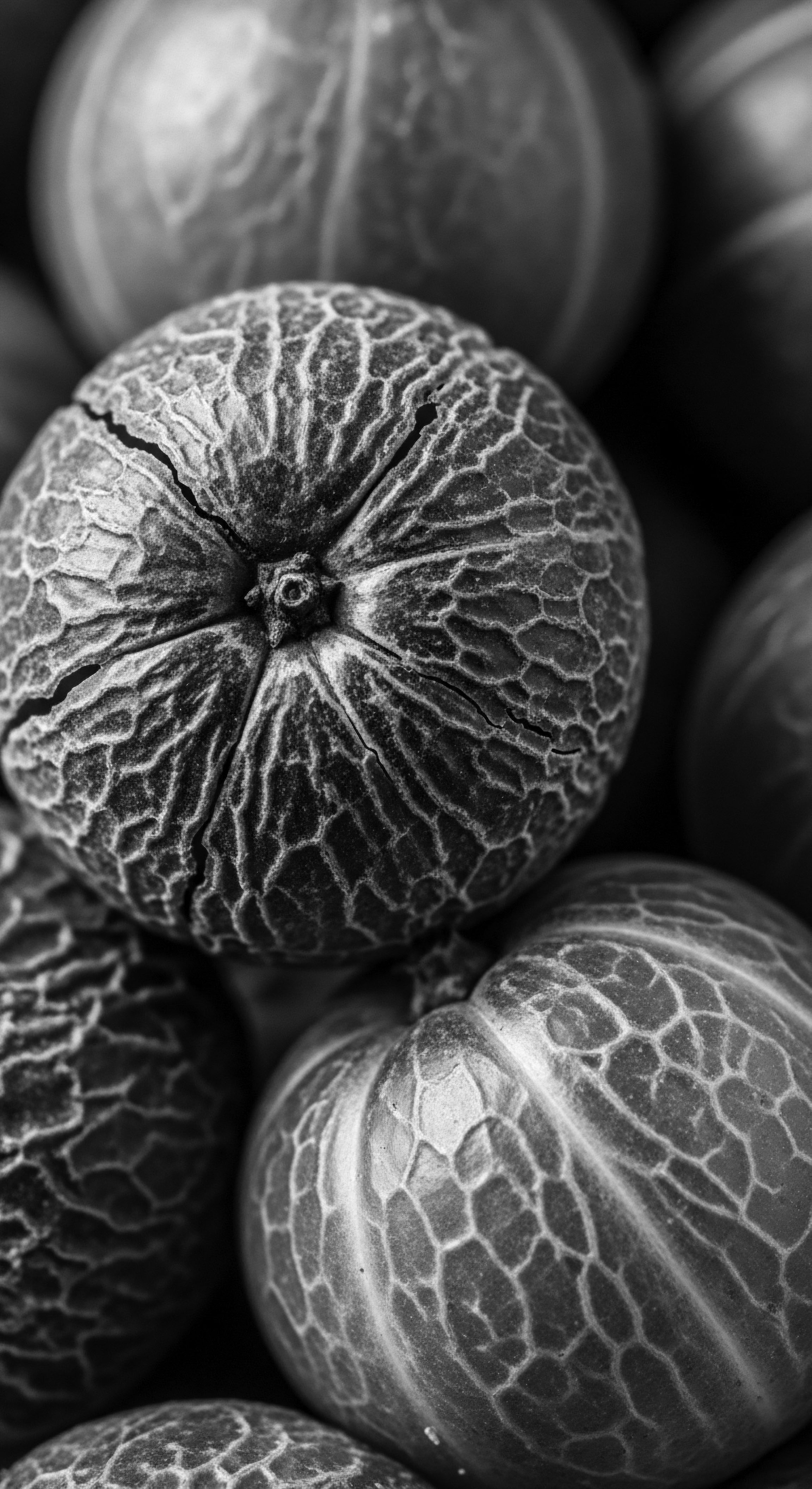
Roots
There exists a profound connection, an unbreakable covenant, between the coiled strands that crown us and the ancient earth from which our ancestors drew breath. To speak of the contemporary embrace of natural hair is to touch upon an enduring memory, a lineage etched not in parchment but in the very fiber of our being. It is a remembrance, a collective exhalation, allowing the very essence of our heritage to unfurl, untamed. For those with textured hair, this current awakening is not a fleeting trend; it represents a homecoming, a reclamation of a birthright that, for too long, lay dormant beneath layers of imposed aesthetics.

Hair’s Elemental Blueprint
The architecture of textured hair, in its myriad forms, is a testament to nature’s boundless inventiveness. Each curve, each spiral, each tight coil, tells a story of resilience, of adaptability shaped over millennia. From the microscopic undulations of the follicle itself, which dictates the elliptical or kidney-bean shape of the hair shaft, to the distribution of keratin proteins, every detail speaks to a unique biological disposition. This inherent structure, so often misunderstood or pathologized, is a marvel of engineering, allowing for unparalleled volume, strength, and a certain majestic defiance of gravity.
Long before the scientific instruments of today could render the intricate cross-sections of a single strand, ancestral communities possessed an intuitive, observational understanding of this biological truth. Their practices were not born of sterile laboratory findings, but from generations of close observation, from the whisper of wind through a shea tree, from the feeling of cool clay upon the scalp. They understood that the tightness of a coil, the density of a crown, required specific, deliberate methods of care. This deep, experiential knowledge formed the bedrock of hair traditions, passed down through the gentle rhythm of hands at work during communal grooming rituals.

Echoes of Ancestral Care
The journey to comprehending modern natural hair starts, truly, in ancient lands. Consider the reverence held for hair in Kemet, where elaborate braided and twisted styles were not only marks of beauty but also indicators of social status, spiritual connection, and tribal belonging. Hair was an extension of self, a conduit to the divine, never something to be manipulated beyond its natural inclination without purpose.
The very tools used – combs carved from wood or ivory, finely crafted picks for detangling – were imbued with a sacredness, part of a continuum of care that honored the hair’s intrinsic nature. This perspective contrasts sharply with later historical eras that sought to suppress or alter the natural expressions of textured hair.
From the arid plains to the lush rainforests, diverse African cultures developed distinct lexicons to articulate the myriad textures and states of hair. Terms that described the tightness of a curl, the luster of a strand, or the vibrancy of a coiffure spoke to a nuanced appreciation of hair as a living entity. These descriptors often went beyond mere appearance, linking hair type to ancestral lineage, geographical origin, or even personal temperament. It was a language of the strand, deeply rooted in the shared understanding of hair’s sacred qualities within specific communities, a language largely lost or overwritten until recent generations began to reclaim it.
The embrace of natural hair today serves as a powerful return to the profound ancestral reverence for textured strands, reflecting a biological and cultural reclamation.

Shaping the Modern Lexicon
The language used to classify textured hair has undergone a significant evolution, often mirroring broader societal shifts. Early attempts at categorization, particularly during periods of colonial influence, often carried the weight of racial bias, framing textured hair through a Eurocentric lens that viewed difference as defect. These systems frequently lacked the precision and respect for diversity that traditional African terms embodied.
For example, hair might be simply categorized as “woolly” or “kinky,” terms that carried derogatory connotations. Yet, the resilience of heritage persisted, quietly influencing care practices and styling techniques even when explicit celebration was suppressed.
The modern hair typing system, while not without its critics, attempts to categorize hair by curl pattern, from straight (Type 1) to tightly coiled (Type 4), with subcategories (A, B, C) indicating increasing tightness. While this system offers a common language for care, its historical context is important. It arose, in part, from a need within the burgeoning natural hair community to articulate and understand the nuances of their hair without recourse to the pejorative terms of the past.
It provides a framework, a starting point for dialogue, but does not fully encapsulate the spiritual and cultural dimensions that ancestral perspectives granted to hair. The true understanding lies beyond a numerical classification, in the recognition of hair as a living part of one’s identity and ancestry.
| Historical Interpretations Spiritual Conduit Hair as a connection to the divine, ancestors, or cosmic energy. |
| Modern Reclamations Self-Expression A visible declaration of identity, heritage, and autonomy. |
| Historical Interpretations Social Marker Indicating status, tribe, marital state, or age within communities. |
| Modern Reclamations Community Link Fostering bonds among those sharing similar hair journeys. |
| Historical Interpretations Protective Shield Styles designed for health and as symbols of resilience against elements. |
| Modern Reclamations Wellness Practice Focus on hair health, mindful care, and natural ingredients. |
| Historical Interpretations The enduring significance of textured hair persists across eras, evolving from ancient spiritual roles to contemporary statements of self-acceptance. |
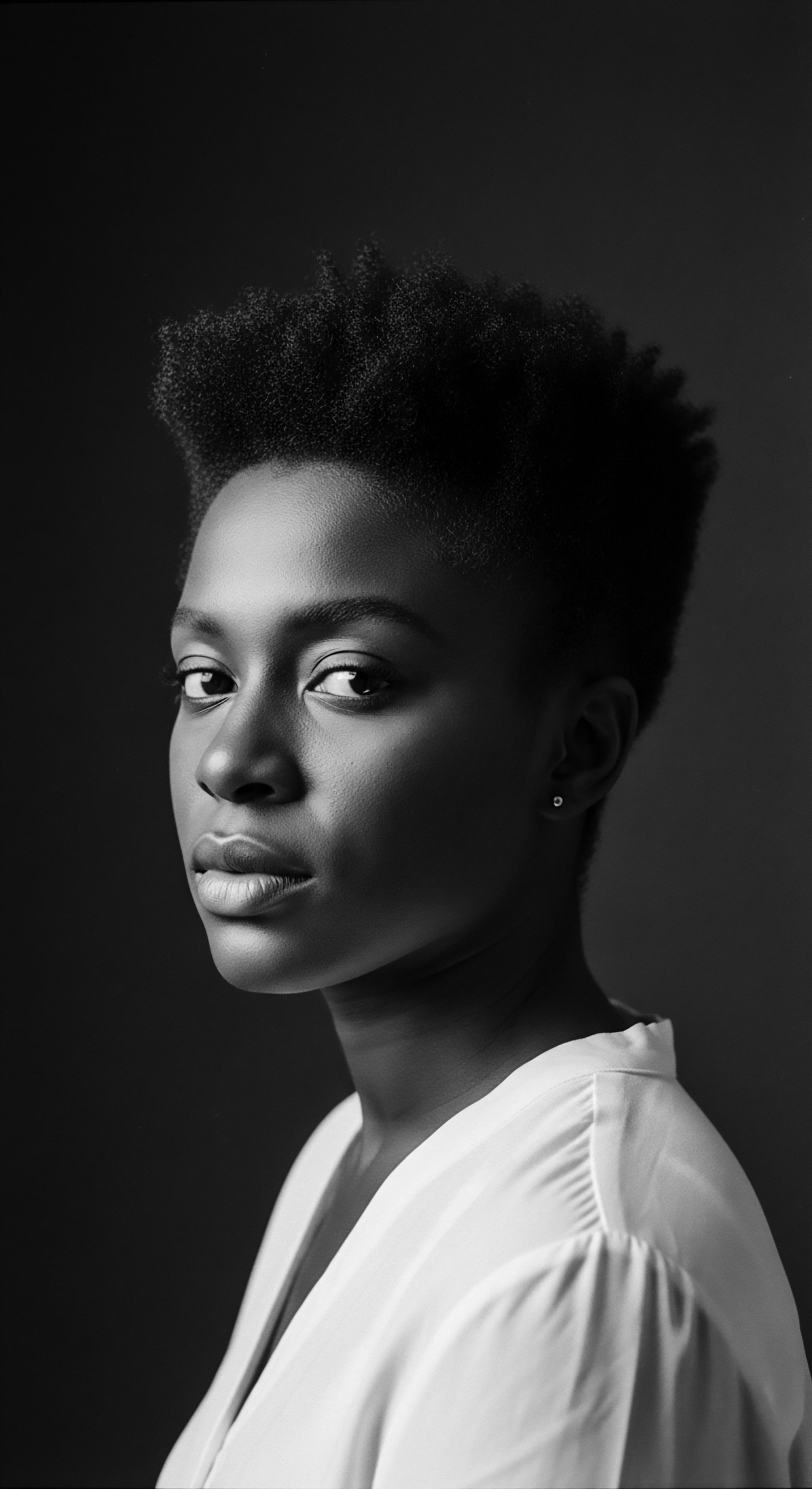
Ritual
The artistry of textured hair styling is not merely a collection of techniques; it represents a living tradition, a heritage passed through generations of hands, whisper by whisper. Each braid, each twist, each thoughtful manipulation of a strand, holds within it the memory of ancestral hands, of communal gatherings, of stories shared under the warmth of the sun or the soft glow of a lantern. The contemporary revival of natural hair styles draws deeply from this well of shared custom, transforming acts of self-care into profound cultural affirmations. It is a dance between tradition and innovation, where ancient wisdom finds new expression.

Adorning with Ancestral Wisdom
For centuries, protective styling stood as a guardian of textured hair, a practice born of necessity and elevated to an art form. Styles like cornrows, box braids, and twists were not only aesthetically compelling but served vital purposes ❉ preserving hair from environmental elements, minimizing manipulation, and facilitating hair growth. In many West African societies, for example, specific braid patterns conveyed intricate messages about a person’s age, marital status, or even their village of origin. These styles were not static; they adapted, traveled, and transformed, carrying the stories of displacement and resilience with them across the Middle Passage and into the diaspora.
The cornrow, a style that kept hair close to the scalp, became a hidden map for escape during the transatlantic slave trade, their patterns sometimes indicating routes to freedom (Byrd & Tharps, 2014, p. 30). This historical example serves as a potent reminder of how hair, and its styling, became intertwined with survival and resistance.
The continuity of these traditions is evident today, where protective styles continue to shield and celebrate textured hair. The modern wearer often chooses these styles not just for their beauty or convenience, but for the profound connection they offer to a lineage of resourcefulness and artistic expression. The careful sectioning, the rhythmic interlocking of strands, the patience required – these mirror the patient, deliberate rhythms of life in ancestral communities, where time was measured by the natural cycles of growth and renewal.
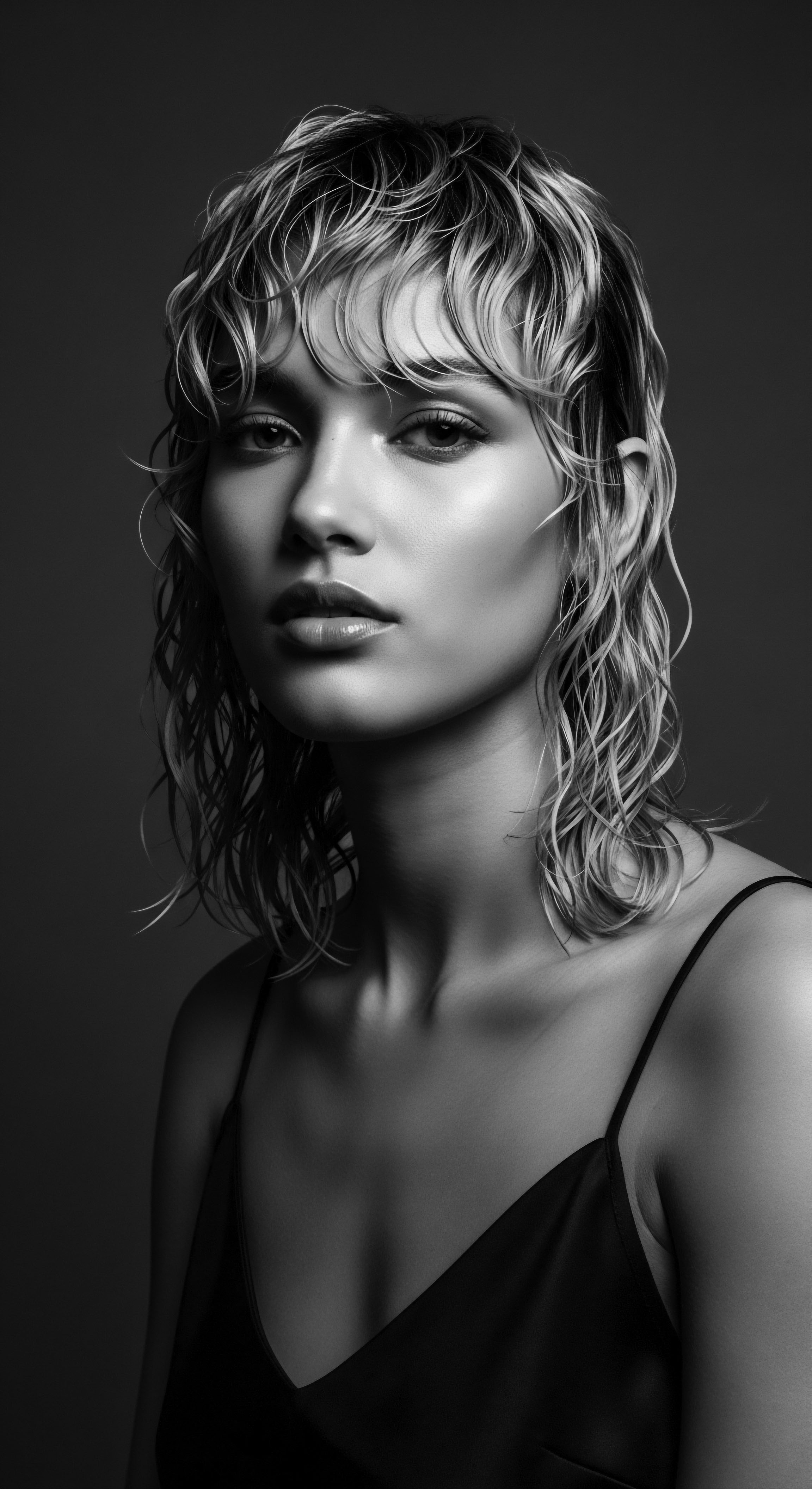
Tools of the Ancestors and Today
The tools that accompany hair care have their own heritage. Simple, yet profoundly effective, tools crafted from natural materials formed the bedrock of ancestral grooming. Think of combs carved from hardwoods, bones, or even animal horns, designed to navigate the unique density and curl patterns of textured hair with respect and gentleness.
These were not merely implements; they were extensions of the hands, designed to work in harmony with the hair’s natural inclination, to distribute oils, to detangle with patience. The modern “wide-tooth comb” or specialized “denman brush” can trace its lineage to these ancient designs, updated with contemporary materials, yet still serving the fundamental purpose of respectful disentanglement and styling without causing undue stress.
- Wooden Combs ❉ Often hand-carved, designed with widely spaced teeth to navigate coils without causing breakage.
- Calabash Bowls ❉ Used for mixing natural treatments like herbal rinses and clay masks, holding the sacred concoctions.
- Hair Picks ❉ Essential for lifting roots and adding volume, a timeless tool across various cultures for achieving fullness.
The evolution of styling implements also includes the cultural significance of adornments. Cowrie shells, beads, metals, and vibrant threads were not just decorative; they were carriers of meaning, symbols of status, protection, or beauty. Wearing these adornments was a statement of identity, a visual language understood within the community. The modern practice of incorporating beads or shells into braids, or wrapping dreadlocks with colorful threads, is a direct continuation of this ancestral tradition, a visible link to the creative spirit and symbolic language of generations past.
Styling textured hair is a vibrant dialogue across time, with each technique and tool whispering tales of resilience and cultural continuity.

From Oppression to Expression
For a significant period in recent history, external pressures and the insidious weight of assimilation pushed many individuals with textured hair to chemically alter or conceal their natural patterns. Straightening combs, lye-based relaxers, and wigs became symbols of conformity, often a necessity for social or economic mobility within prejudiced societies. This was a departure from ancestral care, a suppression of heritage. Yet, the longing for authentic self-expression, for the freedom to simply exist in one’s natural form, never truly vanished.
The mid-20th century saw the beginnings of a cultural awakening, particularly within the Black liberation movements, where natural hair emerged as a potent symbol of pride and resistance. The Afro, a majestic crown of defiance, became a powerful statement, rejecting imposed beauty standards and affirming Black identity. This shift laid groundwork for the contemporary natural hair movement.
It was a visible manifestation of a broader cultural push for self-acceptance, for a return to cultural roots, and for a celebration of ancestral beauty. This period, while complex, highlighted the sociopolitical dimensions of hair choices, making it clear that hair was never simply about aesthetics; it was, and remains, a declaration of self and heritage.
| Historical Context Communal Rituals Shared grooming, intergenerational teaching, social bonding. |
| Contemporary Expression Digital Communities Online forums and tutorials foster shared learning and mutual support. |
| Historical Context Symbolic Adornments Shells, beads, and threads communicating status and identity. |
| Contemporary Expression Personalized Embellishment Adornments reflecting individual style and global heritage. |
| Historical Context Necessity for Protection Styles guarding hair from harsh climates and manual labor. |
| Contemporary Expression Intentional Care Prioritizing hair health and longevity through protective techniques. |
| Historical Context The core motivations behind textured hair styling—community, identity, and care—maintain a timeless connection across centuries. |
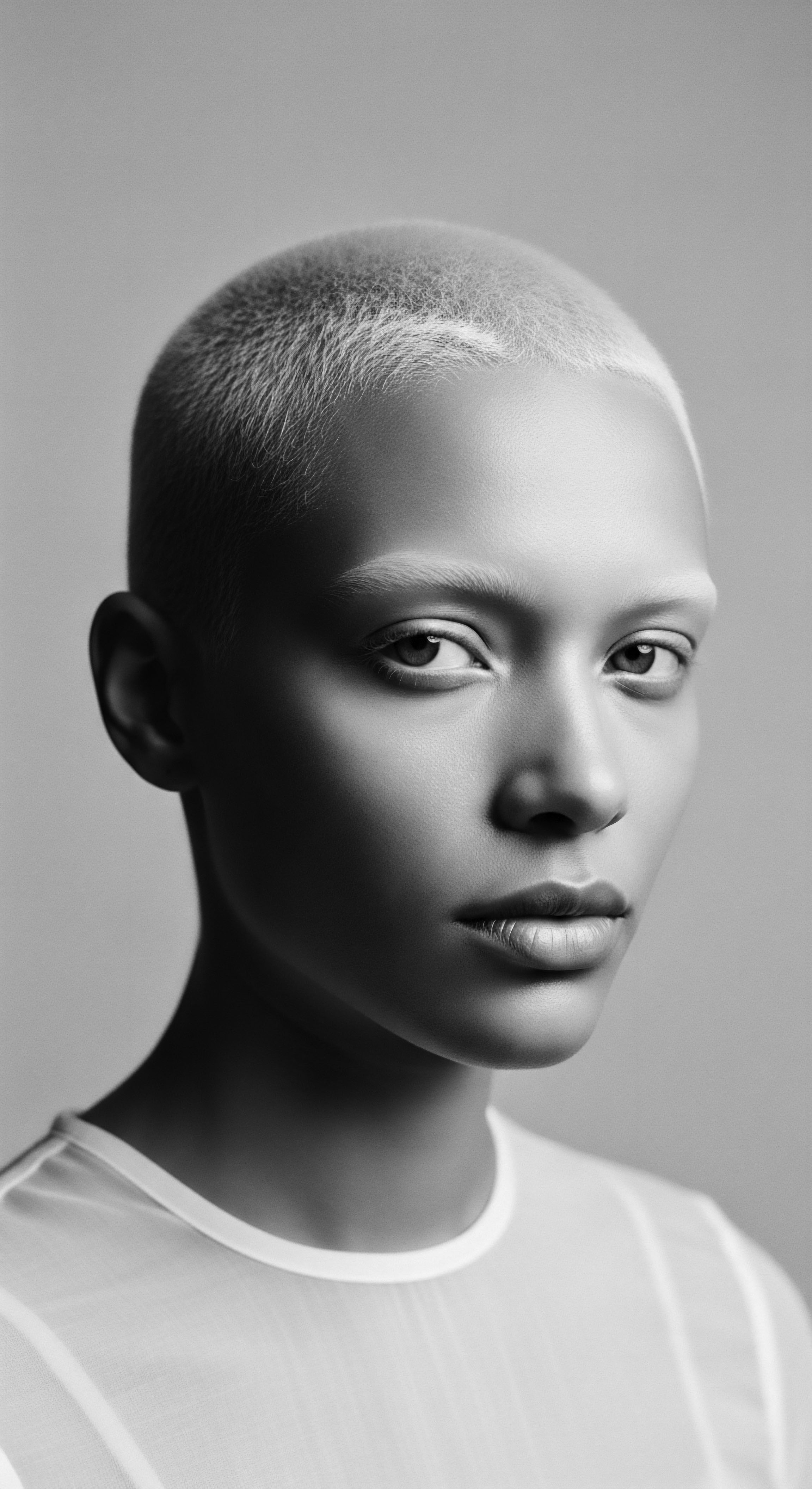
Relay
The journey to embracing natural hair, in its fullest sense, reaches beyond the visual realm of style and into the deep currents of holistic wellbeing and the quiet power of ancestral wisdom. This is where the modern movement truly distinguishes itself ❉ by weaving together the scientific understanding of hair biology with timeless care practices, all while navigating the complexities of historical erasure and contemporary reclamation. The embrace of natural hair, at its heart, is a relay race across generations, a handing off of wisdom and resilience.
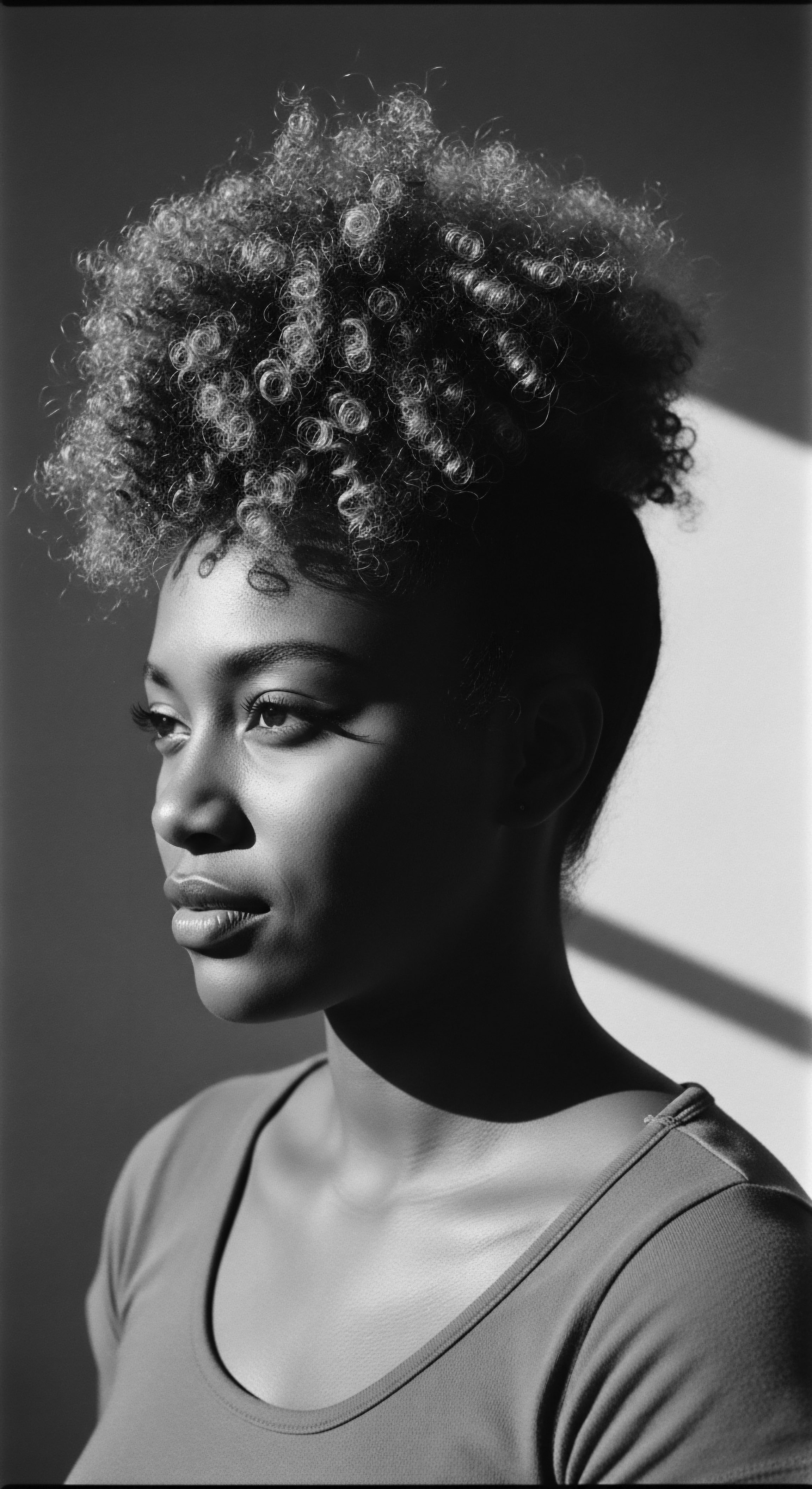
How Does Ancestral Philosophy Inform Modern Hair Regimens?
Ancestral wellness philosophies rarely isolated parts of the body from the whole. Hair health was understood as an extension of overall vitality, a reflection of the nourishment received from within and without. This holistic perspective is gaining renewed prominence in modern natural hair care, moving beyond superficial product application to consider diet, stress, hydration, and even spiritual equilibrium.
The ancient practice of oiling the scalp and strands, for example, was not just about lubrication; it was often accompanied by gentle massage, stimulating circulation, and inducing a state of calm. These rituals were moments of self-connection, a practice of mindfulness that tended to the spirit as much as the hair.
Contemporary regimens, therefore, seek to build upon these principles. The focus is on consistency, on listening to the hair’s needs, and on choosing ingredients that honor its delicate balance. This might involve a regular pre-shampoo oil treatment, inspired by the historical use of nourishing botanical infusions; or the conscious selection of low-manipulation styles, echoing the ancestral understanding of hair preservation. The goal is not merely cosmetic repair but sustained, vibrant hair health that resonates with ancestral rhythms of care.
- Observational Wisdom ❉ Ancestors studied hair’s reaction to natural elements, adapting care to seasonal changes and local botanicals.
- Ingredient Specificity ❉ Deep knowledge of indigenous plants and their benefits for hair, from strengthening to soothing the scalp.
- Ritualistic Consistency ❉ Hair care as a regular, often communal, practice, not a sporadic effort, reinforcing its importance.
The pursuit of vibrant hair health today is a continuation of ancestral holistic practices, honoring the strand as part of a larger, interconnected being.
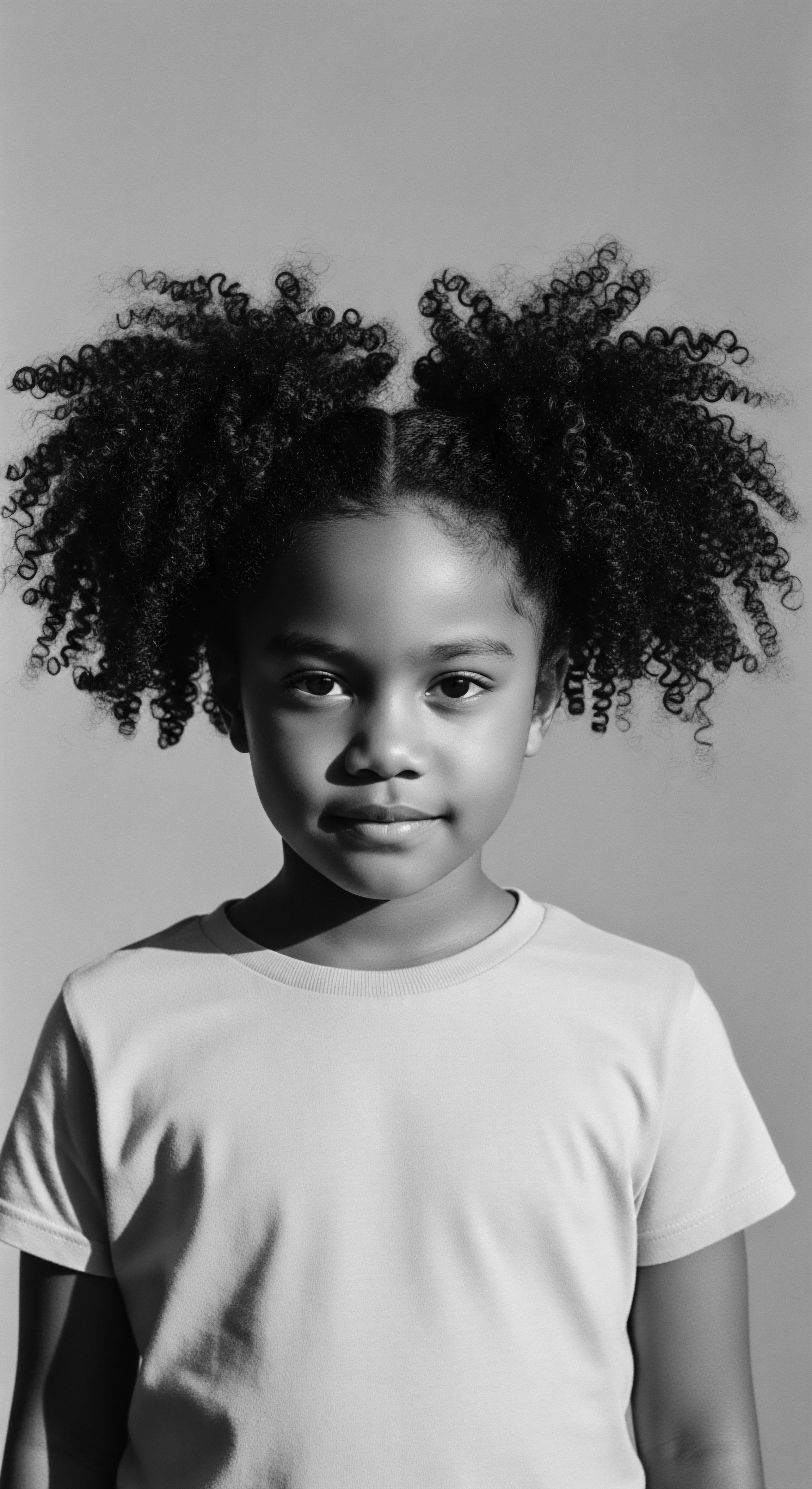
The Nighttime Sanctuary and Its Ancient Echoes?
Perhaps no modern natural hair practice is more emblematic of heritage than the nighttime ritual of protecting one’s crown. The silk or satin bonnet, the scarf, the pillowcase – these are not mere accessories; they are guardians, descendants of age-old practices designed to preserve hair from friction, moisture loss, and tangling during sleep. In many African cultures, head coverings held immense cultural and spiritual significance, used not just for practical purposes but also to signify reverence, modesty, or status.
Wrapping the hair before rest was a common practice, safeguarding elaborate styles and maintaining the hair’s integrity. These coverings could also represent spiritual protection, a barrier between the waking world and the realm of dreams.
The contemporary bonnet, therefore, carries the weight of this historical lineage. It is a simple object that carries immense symbolic power, connecting the wearer to a long line of individuals who understood the value of their hair and sought to protect it. This practice, often seen as a small, personal act, is a profound cultural statement, reaffirming the preciousness of textured hair and the enduring wisdom of its care. It speaks to a commitment to longevity, to preserving what is inherently beautiful, and to passing down a tradition of mindful stewardship.
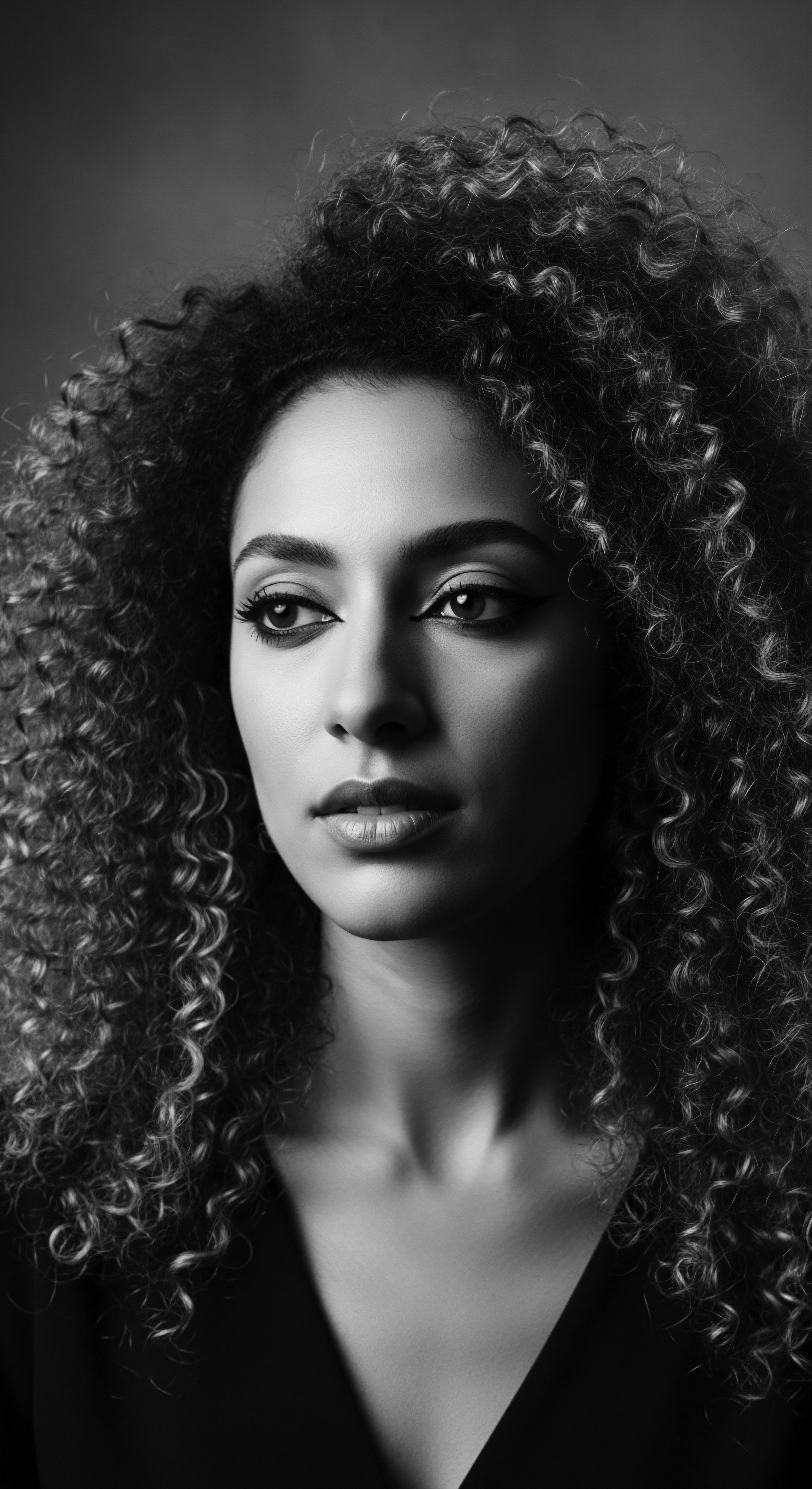
Unearthing Botanical Legacies
The embrace of natural hair has spurred a renewed interest in ingredients, shifting away from synthetic formulations towards botanicals that have graced ancestral hair for centuries. Shea butter, a staple across West Africa, recognized for its conditioning and sealing properties, has been used for generations to nourish skin and hair in harsh climates. Various oils, from castor to argan (though argan is more commonly associated with North Africa), find their modern utility validated by long-standing traditional uses, which often involved infusing them with herbs for specific benefits. Clay washes, historically used for cleansing and clarifying, are now appreciated for their gentle detoxifying properties, offering an alternative to harsh detergents.
This return to botanical roots highlights a fascinating intersection of ancestral wisdom and modern scientific inquiry. Contemporary research often finds that the active compounds in these traditional ingredients possess the very properties – anti-inflammatory, moisturizing, strengthening – that ancestral practitioners intuitively understood through observation and trial. The rediscovery of these ingredients is not just a trend; it’s a profound act of decolonization in hair care, a conscious choice to honor and utilize the earth’s gifts as our forebears did, a true relay of knowledge across epochs.
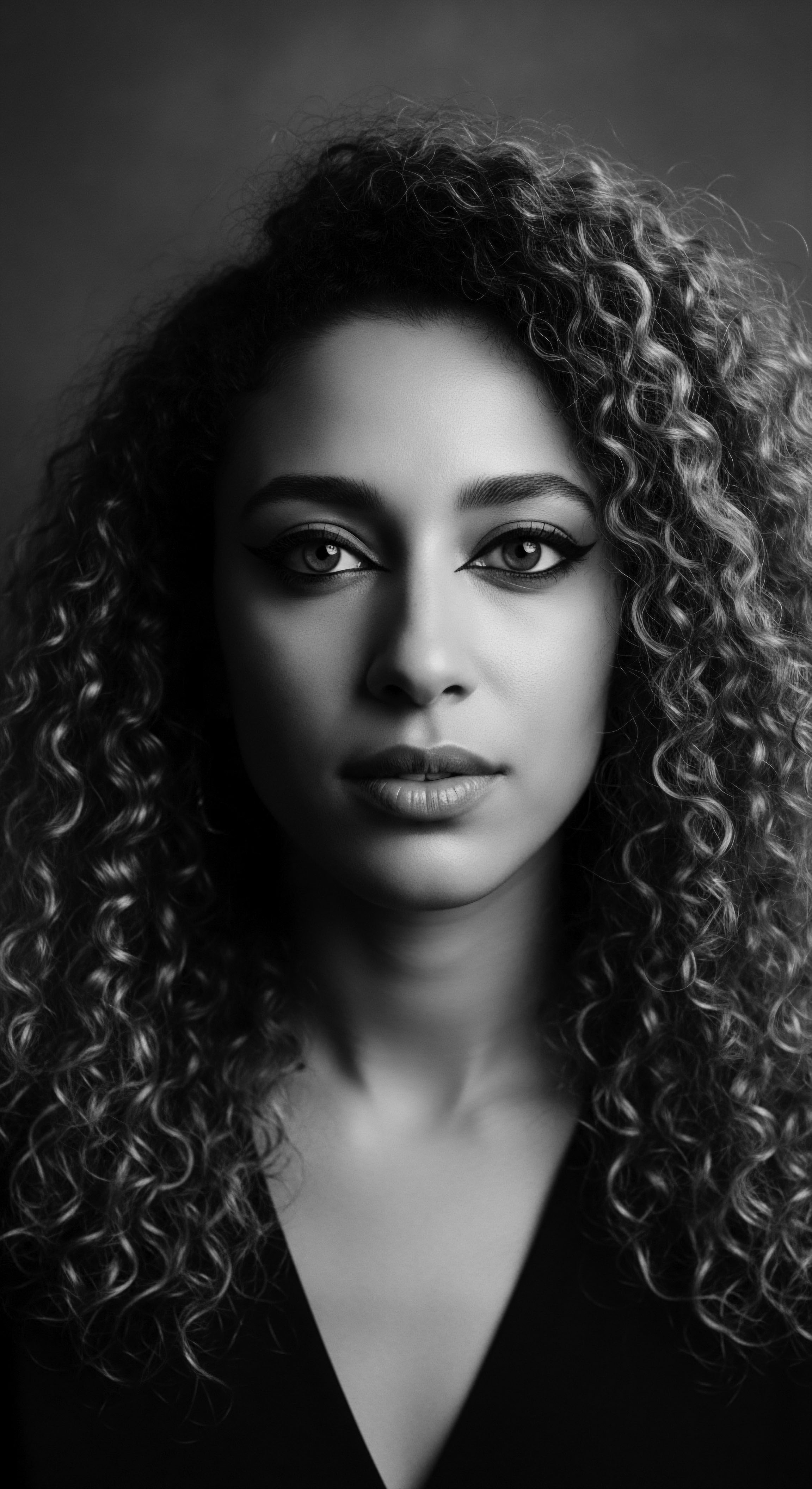
Societal Shifts and Hair as Identity
The modern embrace of natural hair is undeniably intertwined with broader societal and political currents. The movement gained significant momentum with the advent of social media, which provided platforms for individuals to share their journeys, exchange information, and build communities that transcended geographical boundaries. This digital space allowed for a rapid dissemination of knowledge about textured hair care, empowering individuals who might have previously felt isolated or lacking resources.
It also created a visible collective, challenging the prevailing narratives of beauty propagated by mainstream media. The sheer volume of shared experiences, tutorials, and success stories created a powerful counter-narrative, normalizing and celebrating a diversity of hair textures.
Furthermore, the movement has pushed for policy changes and greater acceptance in professional and academic settings. Historically, textured hair, particularly in its natural state, faced discrimination in workplaces and schools, often deemed “unprofessional” or “distracting.” The Crown Act in the United States, which prohibits discrimination based on hair texture or protective hairstyles, stands as a concrete victory stemming from this cultural shift. This legislative movement, though ongoing, underscores the profound impact of the natural hair movement beyond personal preference; it is a fight for equity, for the right to embody one’s heritage without penalty.
| Influencing Factor Civil Rights Movement |
| Impact on Natural Hair Embrace Fostered a broader sense of Black pride and self-acceptance, positioning the Afro as a political statement. |
| Influencing Factor Digital Communities |
| Impact on Natural Hair Embrace Provided global platforms for information exchange, shared experiences, and collective empowerment among textured hair individuals. |
| Influencing Factor Anti-Discrimination Legislation |
| Impact on Natural Hair Embrace Legally challenged hair bias in workplaces and schools, creating safer spaces for natural hair expression. |
| Influencing Factor Wellness and Holistic Trends |
| Impact on Natural Hair Embrace Aligning hair care with broader self-care practices, encouraging natural ingredients and mindful routines. |
| Influencing Factor The journey of natural hair acceptance reflects a dynamic interplay of historical struggle, community building, and evolving societal values. |

Reflection
The modern embrace of natural hair represents more than an aesthetic preference; it stands as a resonant chord struck in the deep chambers of collective memory. It is a living archive, a continuation of dialogues across time and continents, speaking of a rich heritage that refused to be forgotten. The ‘Soul of a Strand’ ethos reminds us that each coil, each wave, carries the echoes of ancestral resilience, ingenuity, and profound beauty. When we nourish our textured hair, when we style it with reverence, when we celebrate its natural expression, we participate in an ancient ritual, a continuous act of honoring those who came before us.
This journey has been one of rediscovery, of understanding that our biology is not a burden but a blessing, a unique facet of human diversity that connects us to earth and sky. It has required courage to shed imposed standards, to unlearn centuries of conditioning, and to stand proudly in the unadorned truth of our crowns. The path continues, a testament to the enduring power of identity, the unbreakable bond of community, and the timeless wisdom that resides within the very fibers of our being. This vibrant lineage, this unbound helix, promises to shape futures where the full spectrum of beauty is not merely tolerated, but deeply revered.

References
- Byrd, Ayana, and Lori Tharps. 2014. Hair Story ❉ Untangling the Roots of Black Hair in America. St. Martin’s Griffin.
- Hooks, bell. 1992. Black Looks ❉ Race and Representation. South End Press.
- Mercer, Kobena. 1994. Welcome to the Jungle ❉ New Positions in Black Cultural Studies. Routledge.
- Rooks, Noliwe M. 1996. Hair Raising ❉ Beauty, Culture, and African American Women. Rutgers University Press.
- Walker, Alice. 1970. The Third Life of Grange Copeland. Harcourt Brace Jovanovich.
- Banks, Ingrid. 2000. Hair Matters ❉ Beauty, Power, and Black Women’s Consciousness. New York University Press.
- Patton, Tracey Owens. 2006. African-American Hair as Culture and Commodity. Continuum.
- White, Deborah Gray. 1985. Ar’n’t I a Woman? ❉ Female Slaves in the Plantation South. W. W. Norton & Company.
